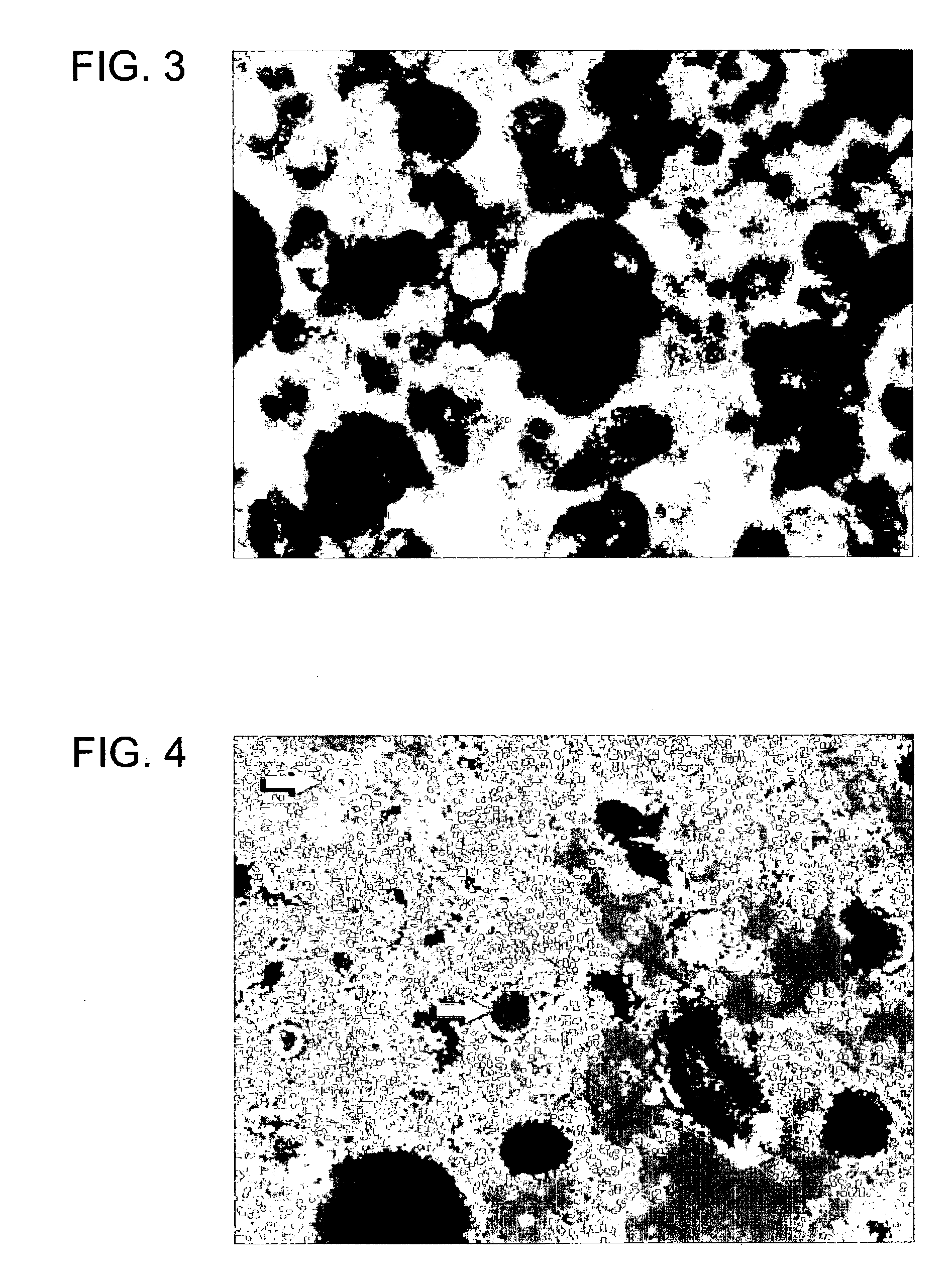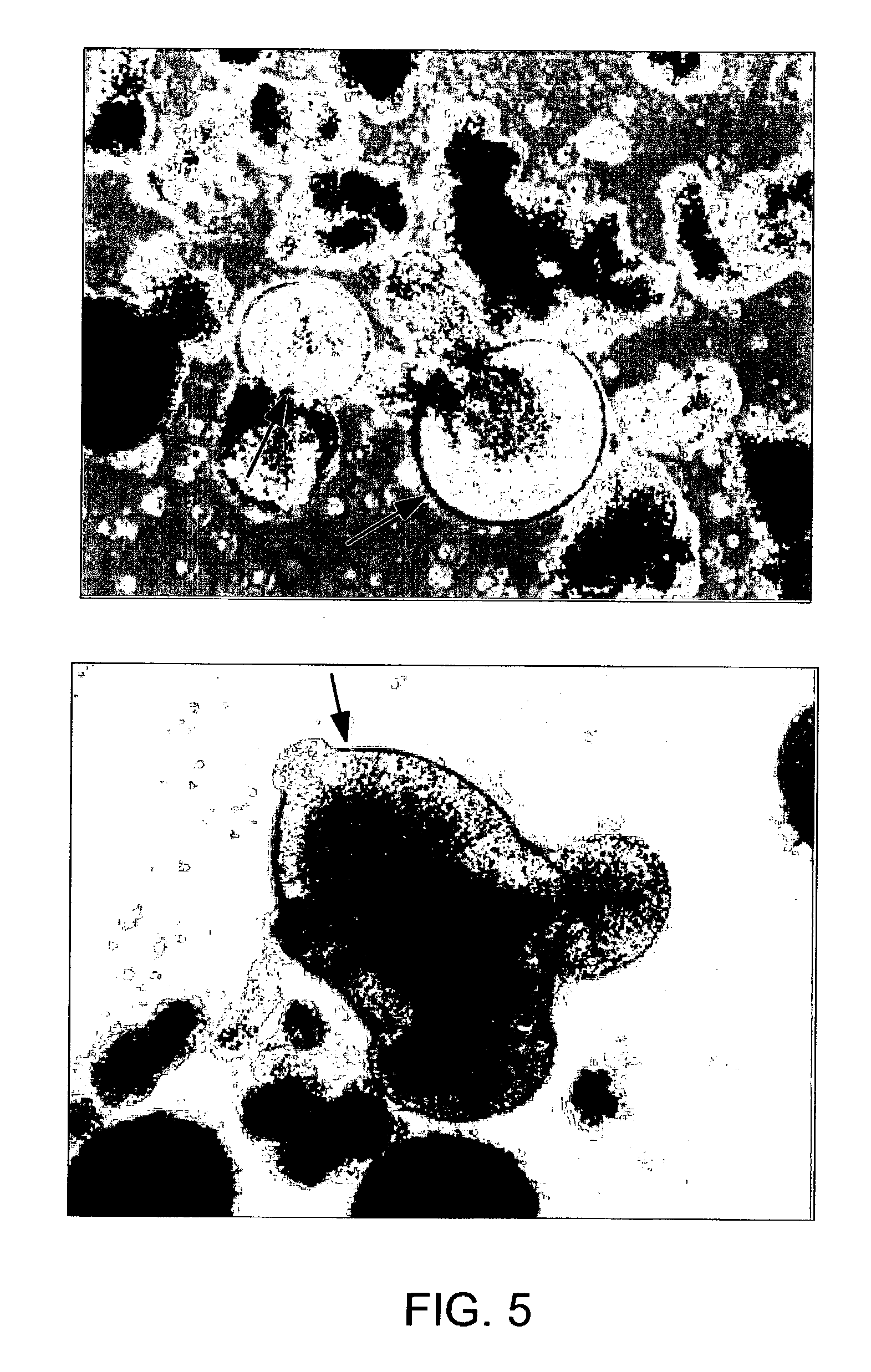Oligodendrocytes derived from human embryonic stem cells for remyelination and treatment of spinal cord injury
a technology of embryonic stem cells and oligodendrocytes, which is applied in the field of cell biology of embryonic cells and neural progenitor cells, can solve the problems of shortening the symptomatic period, not preventing long-term disability, and robbed the embryonic stem cells of their neural transmission capacity, and achieves the effect of enhancing the late-stage differentiation
- Summary
- Abstract
- Description
- Claims
- Application Information
AI Technical Summary
Benefits of technology
Problems solved by technology
Method used
Image
Examples
example 1
Differentiation of hES cells into oligodendrocytes
[0160]Human embryonic stem (hES) cells of the H7 and H1 lines were propagated in the undifferentiated state in feeder-free conditions on a Matrigel® substrate in knockout (serum-free) medium conditioned by primary mouse feeder cells and containing added bFGF (WO 99 / 20741; WO 01 / 51616, Geron Corp).
[0161]The hES cells were differentiated into cells of the oligodendrocyte lineage according to the following scheme:
[0162]
TABLE 1Oligodendrocyte Production from hES cellsDay:123-1011-1515-282829-3535-3637-4142CultureSuspen-AddFullRemoveRemovePlate onExpandPlate onRemoveFixconditions:sionretinoicstrengthRAbFGFMatrigelcellsPLL-growthculturescultureacidmedium®Lamininfactors(RA)Medium:TRTRGPMGPMGPMGPMGPMGPMGPMGPMAdditives:bFGFbFGFRAbFGFEGFEGFbFGFbFGF——44 ng / mL;10 μM2 ng / mL;20 ng / mL20 ng / mL2 ng / mL;2 ng / mL;ng / mLRAEGFEGFEGF10 μM20 ng / mL20 ng / mL20 ng / mL
[0163]
TABLE 2Ingredients of Glial Precursor Medium (GPM)ManufacturerStockFinalComponent(catalog)co...
example 2
ES-derived Cells Restore Spinal Cord Function
[0188]Ability of ES-derived oligodendrocyte lineage cells to restore neurological activity was determined in a rat contusion model of spinal cord injury.
[0189]Moderate contusion injury was induced in the low thoracic spinal cord of anesthetized adult Sprague Dawley rats using an NYU impactor. One week after the injury, the contusion site was transplanted with 2.5×105 cells in 4 μL medium. The transplant cell population was prepared by exposing cells at Day 35 of the differentiation scheme (Example 1) for 3 min with trypsin and EDTA to render the cells non-adherent. They were then rinsed in basal medium, and concentrated to 6×104 cells per μL.
[0190]Six weeks after injury, the animals were injected with the anterograde tracer BDA (biotinylated dextran amine) into the motor cortex. Emerald green was injected into the lumbar spine to label lumbar tracts. The location of these markers was determined when the experiment was terminated at 8 week...
example 3
Therapeutic Effect Correlates with Persistence and Function of Transplanted Oligodendrocytes
[0193]For this example, hES cells form the H7 line were differentiated into oligodendrocyte precursor cells for transplantation using a similar strategy as in Example 1, with some refinements. The formula for GBM was the same, except that the progesterone concentration was recalculated as 65 ng / mL. EGF was included in the culture from the outset, and bFGF was withdrawn after Day 2.
[0194]
TABLE 3Oligodendrocyte Production from hES cellsDay:123-911-1515-2828-35CultureSuspensionAdd retinoicFull strengthRemove RARemove bFGFPlate onconditions:cultureacid (RA)mediumplastic1 hour;Plate onMatrigel ®overnightMedium:TRTRGBMGBMGBMGBMAdditives:bEGFbFGF 2EGF 20bFGFEGF 20 ng / mLEGF4 ng / mLng / mLng / mL2 ng / mLFeed every other20 ng / mLEGF 20EGF 20RA 10EGFday (MWF); non-ng / mLng / mLμM / mL20 ng / mLadherent;RA 10complete mediaμM / mLreplacement
[0195]In the first week, feeding was preceded by a 4-5 minute centrifugation at l...
PUM
 Login to View More
Login to View More Abstract
Description
Claims
Application Information
 Login to View More
Login to View More - R&D
- Intellectual Property
- Life Sciences
- Materials
- Tech Scout
- Unparalleled Data Quality
- Higher Quality Content
- 60% Fewer Hallucinations
Browse by: Latest US Patents, China's latest patents, Technical Efficacy Thesaurus, Application Domain, Technology Topic, Popular Technical Reports.
© 2025 PatSnap. All rights reserved.Legal|Privacy policy|Modern Slavery Act Transparency Statement|Sitemap|About US| Contact US: help@patsnap.com



